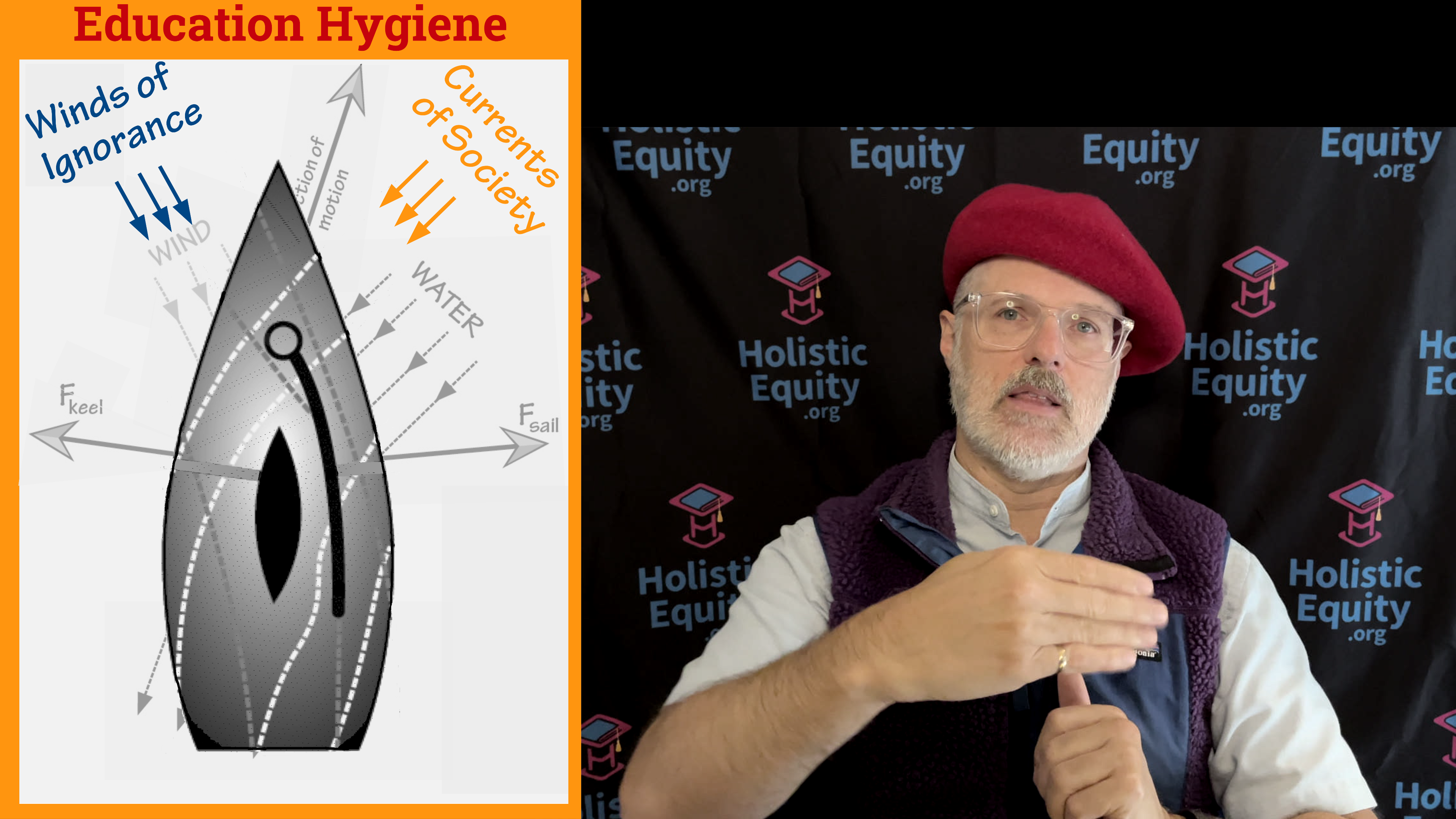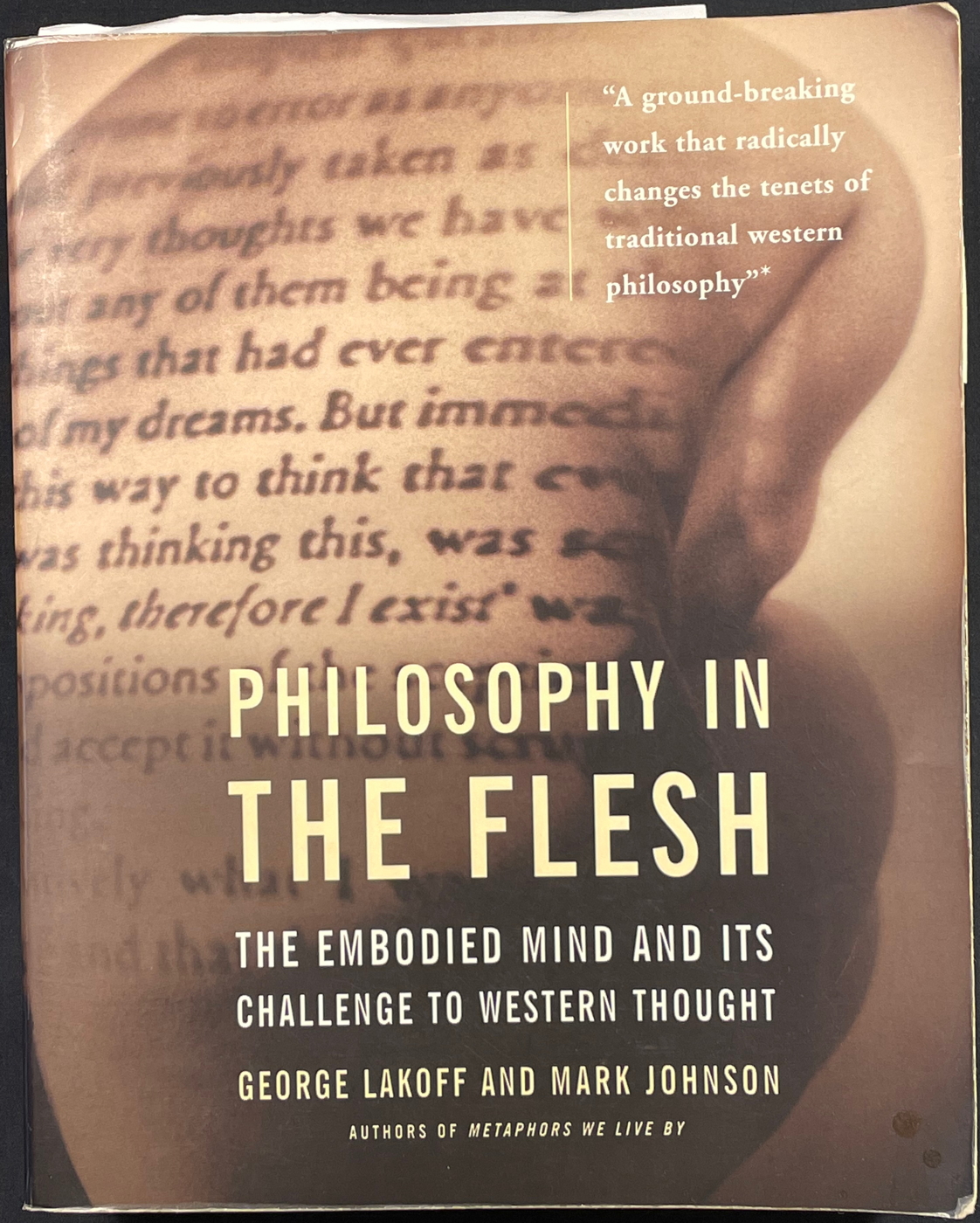Student Motivation: Education Hygiene Ep#1
Welcome to episode one of the Education Hygiene Series in which I will be explaining the specific teacher behaviors that scientists have found influence student motivation for better … and for worse.
In my upcoming book Schooling for Holistic Equity, I introduce the notion of education hygiene in Chapter 6.
Links:
Book- Schooling for Holistic Equity
(Survey no longer available)
Holistic Equity Newsletter (temporarily unavailble)
Hygiene Items: Ahmadi, A., Noetel, M., Parker, P. D., Ryan, R., Ntoumanis, N., Reeve, J., … Lonsdale, C. (2022, February 4). A Classification System for Teachers’ Motivational Behaviours Recommended in Self-Determination Theory Interventions. https://doi.org/10.31234/osf.io/4vrym
Here’s the gist.
The school system consistently makes too many errors that negatively impact education.
Both bias and noise are errors that prevent us from accomplishing our intended tasks.
Errors in the school system are activities that waste the time and energy of teachers and students.
When the majority of people are disengaged, as is consistently found in K-12 schools, there is a big problem with wasted time and energy.
Everyone in the education sphere has a pet theory about what causes errors in K-12 schooling.
Those theories nearly always entail either not enough or too much of something:
basics, choice, funding, phonics, charters, projects, character, Bible study, democracy, technology, whole language, anti-racist curriculum, highly qualified teachers, social-emotional learning, and more.
For now, there is no consensus on any model that could constitute a core benchmark for educational plausibility.
Other fields have reliable “central dogmas.”
In physics it’s the fundamental forces.
Chemistry has the periodic table.
For biology it’s DNA and cells.
Education needs a “central dogma,” a foundational model of causality.
Having that kind of model would enable better judgement of proposals for improvement.
In particular I suggest that Self-Determination Theory (SDT) should be considered the central dogma for education.
In the book I go on to build a metaphor about how learning is the process of sailing a boat against the winds of ignorance while also dealing with the currents of society.
Because we need to make a similar transition in education, I draw attention to how our society previously made the conceptual transition in medicine from the miasma model of disease to germ theory.
In education we need to go from the delivery-of-knowledge model to the mental mapping and navigation model.
When this better mental model becomes coupled with the scientific soundness of SDT, then we will have a basis for rejecting the worst ideas for school improvement and new methods for comparing the merits of the best ideas.
Next I turn to the book Noise by Daniel Kahneman and his colleagues to elaborate on hygiene and what it means:
"When you wash your hands, you may not know precisely which germ you are avoiding—you just know that handwashing is good prevention for a variety of germs.
Hygiene measures can be tedious.
Their benefits are not directly visible; you might never know what problem they prevented from occurring.
Conversely, when problems do arise, they may not be traceable to a specific breakdown in hygiene observance.
For these reasons, handwashing compliance is difficult to enforce, even among healthcare professionals, who are well aware of its importance."
Consider that medical hygiene is not about the skillful use of medical techniques that doctors became qualified to provide only after many years of study.
Everyone in the medical context, including the patient, the nurse, the receptionist, and the janitor, needs to shape their behavior to conform to hygienic practices in order for medical institutions to be as effective as we expect them to be and enable medical interventions to have the best chance of success.
In order to reduce bias and error in schools we need an equivalent to medical hygiene; we need education hygiene.
The majority of the errors that schools make are at least partly attributable to the effects of demotivation and disengagement.
The biases that are at the top of most people’s minds these days, like race, gender, and disability are concerning because, when they don’t alienate a student from learning opportunities altogether, they result in demotivation and disengagement from learning.
We know that student motivation and engagement are just as important as the quality of a teacher in getting the results we want in schools.
From the perspective of Self-Determination Theory we know that motivation and engagement are the results of satisfying the primary human psychological needs for relatedness, autonomy, and competence.

Boosting Student Motivation
Education hygiene, therefore, consists of practices that better support primary needs.
Consider that education hygiene is not about the skillful use of instructional techniques that teachers became qualified to provide only after many years of study.
Everyone in the education context, including the student, the teacher, the administrator, and the janitor, needs to shape their behavior to conform to hygienic practices in order for education institutions to be as effective as we expect them to be and enable education interventions to have the best chance of success.
Paraphrasing Kahneman et al. here is how we should think about education hygiene:
Just like handwashing, and other forms of prevention, education hygiene is invaluable but thankless.
Correcting a well identified bias like race, gender, disability, etc. may at least give you a tangible sense of achieving something.
But the procedures that systematically support primary needs may not.
They will prevent demotivation and disengagement to some degree.
Yet you will never know when or how.
Demotivation and disengagement are invisible enemies, and preventing the assault of invisible enemies can yield only an invisible victory.
Handwashing does not prevent all diseases.
Likewise, education hygiene will not prevent all demotivation and disengagement.
It will not make every student brilliant.
But like handwashing, it addresses an invisible yet pervasive and damaging problem.
Wherever there is a situation that meaningfully challenges a student, there is the possibility of demotivation and disengagement, and I propose education hygiene as a tool to reduce it.
End paraphrase
Returning to the navigation metaphor for education, we can conceive of education hygiene as a set of practices that are focused on navigating a boat, not merely sailing it.
The traditional notion of school is about how to get around very specific obstacles.
The idea of education hygiene as it applies to schools is about the boat and how it works.
Education hygiene will help students know their boats and how to redesign them, not just steer them in the right direction.
Students face the challenges of shaping their growing hulls, rigging sails to their growing masts, and then maintaining the appropriate trim of their whole vessel in relation to the winds of ignorance and the currents of society they encounter.
Schools fail in their duty to assist students with those challenges when they provide overly narrow channels for compliance.
However, they can fulfill that duty by practicing education hygiene.
Up until the mid-1800s, hospital infection rates ranged from 50 to 80% because they had the wrong mental model of disease.
In the late 1800s as the mental model improved, basic medical hygiene was invented.
Then when it was finally implemented in a systematic way in the early 1900s the rate of infection dropped so that today it is less than 7%, a massive improvement.
I suspect education hygiene will have a similar magnitude of effect on the educational power of instruction.
So this series will be going into the most basic forms of education hygiene for teachers to boost student motivation.
The list of behaviors I am drawing from was presented in a paper just this year with the ungainly title of “A Classification System for Teachers’ Motivational Behaviours Recommended in Self-Determination Theory Interventions” which was produced by the consensus of a long list of authors.
Each of the episodes that follow will highlight a few of the listed behaviors to help you understand them and use them to improve your teaching or leadership practice.
Most of the items apply to leadership, not just teaching.
I hope you will join me.
If you would like to know when new videos in the series are released you can subscribe to my newsletter or follow my blog at blog.Attitutor.com
If you are interested in taking deeper dives into improving schools I suggest that you visit HolisticEquity.org where you can find out more about my book Schooling for Holistic Equity: How to Manage the Hidden Curriculum in K-12.
One final thing, if you want find out how much you already know about education hygiene you can take the Teachers' Effects on Motivation Survey to find out how well your knowledge of motivation stacks up against what scientists have found.
There are links underneath the video on my site.
Thanks for watching.
This article was printed from HolisticEquity.com


